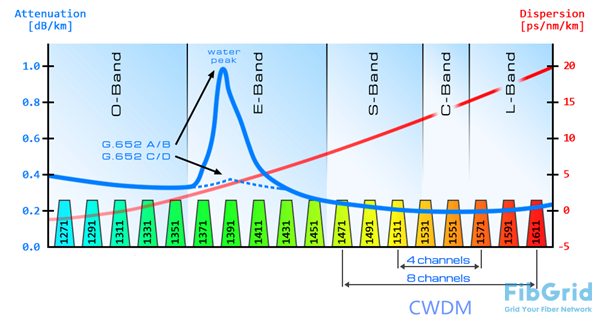
 Online Service
Online Service - +86-755-32801225
- Info@FibGrid.com
- 008618126154018
- HQLJJHZX
- Ryan Hwang
- +86-755-32801225

 Online Service
Online Service G.652 optical fiber is the earliest type of single-mode fiber and is currently the most widely used fiber in communication networks. Whether in long-haul networks, local networks, or access networks, G.652 optical fiber is the undisputed star, accounting for over 95% of total usage. G.652 optical fiber is divided into four subcategories: a, b, c, and d. So, what are the differences between these subcategories? This must be explained in terms of the fiber’s attenuation characteristics and the fiber’s PMD (Polarization Mode Dispersion) coefficient.
The attenuation coefficient of conventional single-mode fiber changes with wavelength, as shown in the figure below. Due to the influence of hydroxyl ions in the fiber material, the attenuation at the wavelength of 1383 nm is relatively high, which is shown as a peak in the figure, commonly referred to as the "water peak." Therefore, communication systems generally avoid this 1383 nm wavelength region.
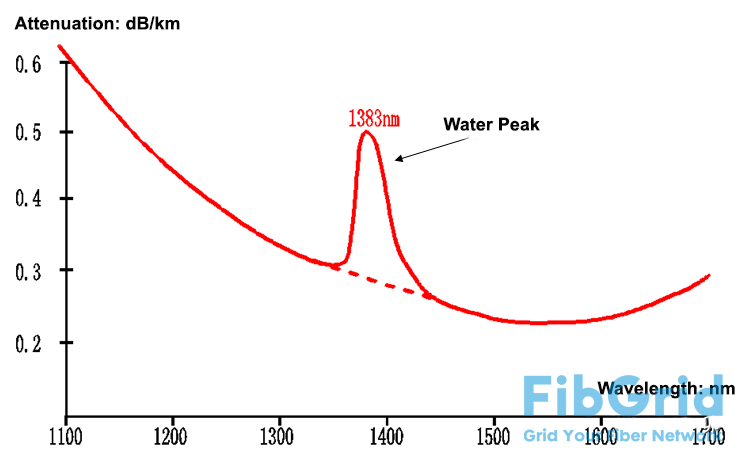
Conventional single-mode fiber exhibits good attenuation characteristics across the wavelength range of 1260 nm to 1675 nm (excluding the 1380 nm region). Therefore, ITU-T has divided single-mode fiber communication systems into several optical bands: O, E, S, C, L, U, with the wavelength ranges of each band shown in the figure below.
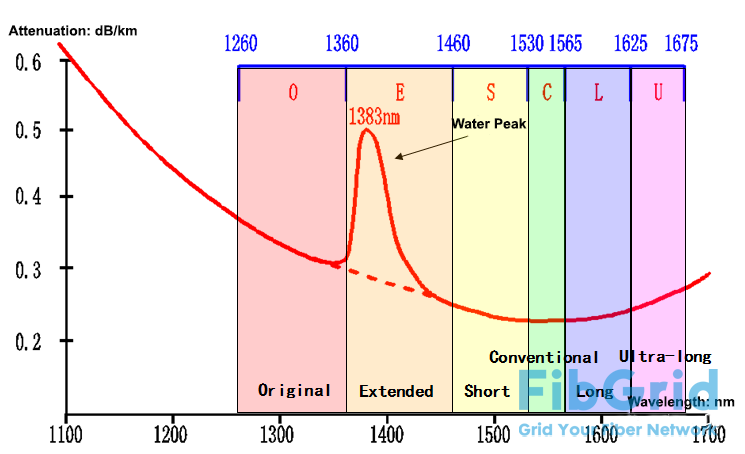
Among these bands, all except the E band can be used for communication. This wasn’t a big issue initially, but a company called Lucent couldn’t let it go and, in 1998, invented a type of fiber with a flat attenuation curve in the E band, as shown in the figure below. This fiber can be used for communication across the O, E, S, C, L, U bands, so it is also known as full-spectrum fiber or low-water-peak fiber.
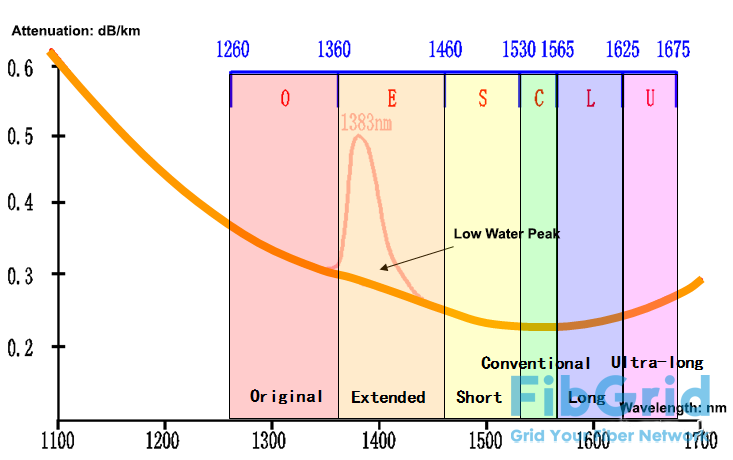
Optical fiber is drawn out through a drawing tower, much like pulling noodles, and its cross-section is not a perfectly regular circle. This leads to the two orthogonal polarization modes of the fundamental mode propagating at different speeds during transmission in single-mode fiber, resulting in a time delay when reaching the other end of the fiber. This is called Polarization Mode Dispersion (PMD), as shown in the figure below. The time delay per unit length of fiber is referred to as the PMD coefficient.
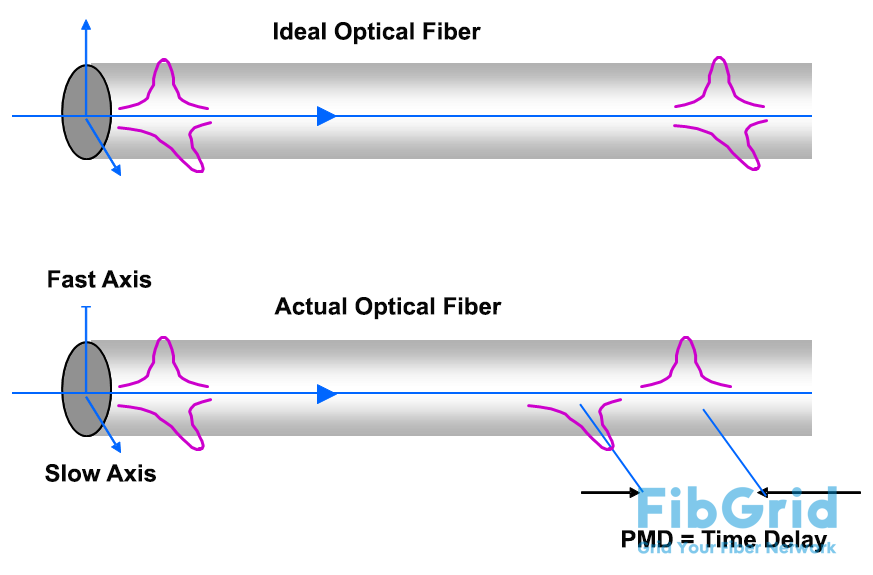
At lower transmission rates, PMD does not significantly affect system transmission. However, as transmission rates increase, PMD becomes a critical factor in limiting transmission distance. The relationship between the PMD coefficient, transmission rate, and transmission distance is shown in the table below.
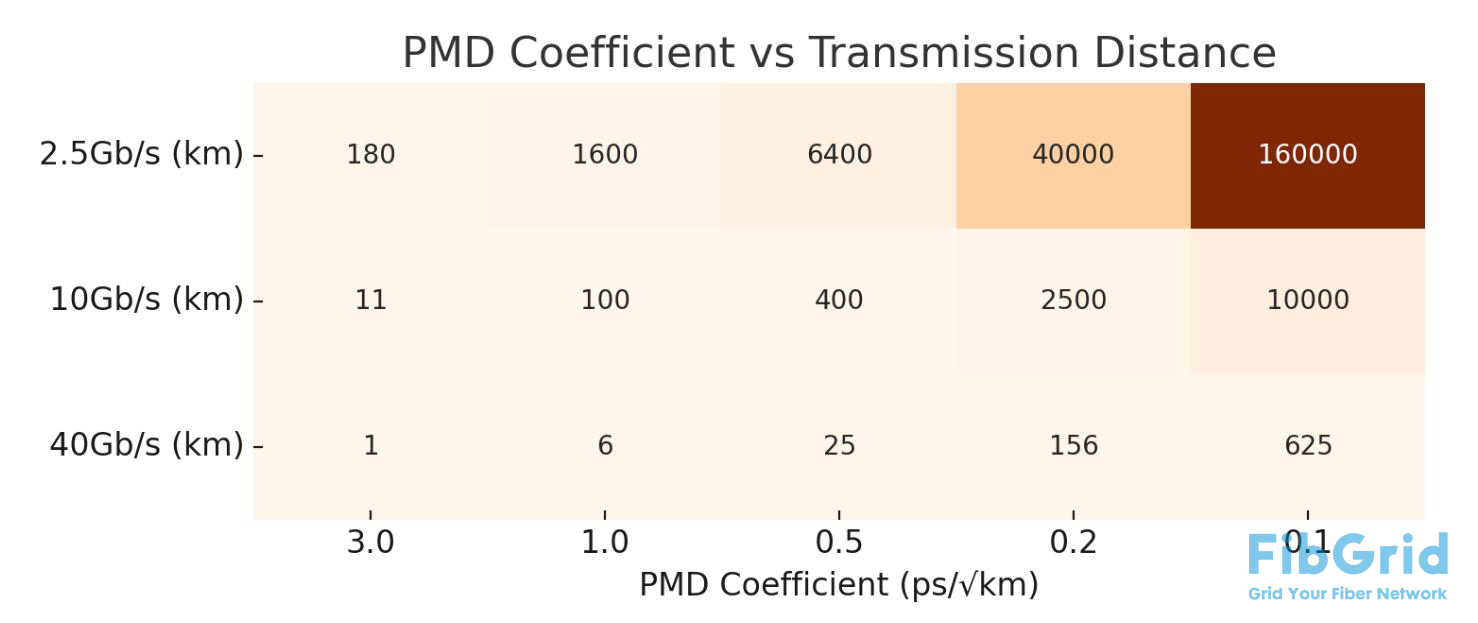
Clearly, the smaller the PMD coefficient of the fiber, the better. Current national standards recommend a PMD coefficient not exceeding 0.2 ps/√km, while actual fiber products generally have a PMD coefficient of less than 0.1 ps/√km.
The subcategories of G.652 are mainly differentiated based on the fiber’s attenuation characteristics and PMD parameters, as shown in the table below.
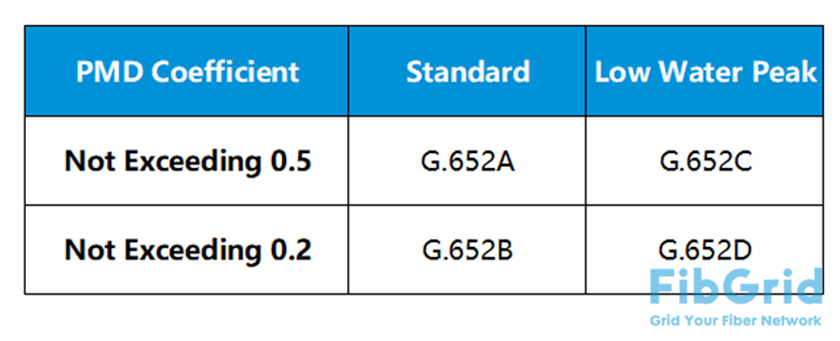
To accommodate the use of full-spectrum fiber, the ITU-T released the CWDM standard in 2002, dividing the full spectrum of single-mode fiber into 18 wavelengths, each with a channel spacing of 20 nm, as shown in the figure below.
